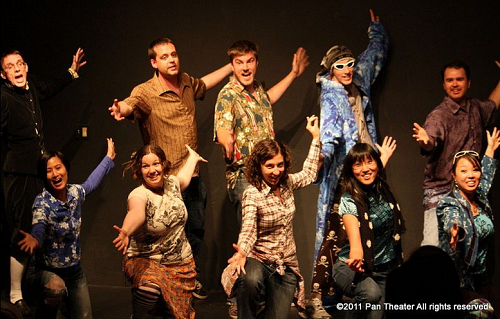What Script-Writers Can Learn from Improv

We recently spoke with David Alger, the producing director at Pan Theater in Oakland, in our ongoing efforts to pull together the OLL Comedy Troupe (tentatively known as Operation: Liberate Laughter. Staff has been generally unenthusiastic, and public interest is low, and the budget is nil, but none of that matters right now! Everything's going to be awesome!). He generously provided these tips for improv beginners, which we think are fantastically relevant for script-writing, too. Read on!
Improv is an art. However, it is also a craft. A craft is something that is learned throgh practice, repetition, trial, error and hard work. Much like any other art (including writing!), skill in improv is acquired over time. The more time spent improv-ing the greater the improvement (pun intended).
That being said, there are rules which can, in general, make a scene better.
As with any art form, you can break all of the rules and still have quality scenes. However, those best able to break the rules are those who first learn and understand them.
So, let's look at some of the basic rules of improv:[[MORE]]
1. Say "Yes, and!"
For a story to be built, whether it is short form or long form, the players have to agree to the basic situation and set-up.
The who, what, and where have to be developed for a scene to work.
By saying yes, we accept the reality created by our partners and begin the collaborative process from the start of a scene.
The collaborative process or group mind helps make us giants, animals, villains, or saints, and more importantly puts us in situations that we would normally avoid.
2. After the "'and," add new information.
An improvised scene can't move forward or advance unless we add new information. That is why new information is added after the "Yes" of "Yes, and!"
Example: Yes, I accept being your assistant Heir Doctor and will gladly get you the princess's body from the morgue tonight.
Rather than:
Yes, I accept being your assistant Heir Doctor. (SILENCE)
Saying "Yes, and" does not mean there won't be conflict or that we would accept something our character would not accept.
3. Focus on the Here and Now.
Another useful rule is to keep the focus on the here and now. A scene is about the people in the scene. The change, the struggle, the win or loss will happen to the characters on the stage.
Focus on what is going on right this at this moment.
Why is your partner moving away from you?
Why did she use a questioning tone?
What did the slight smile mean?
How do you, as your character, feel about what she is doing?
Remember, it isn't just about the words; it is about what is happening.
The words are tools used to accomplish or to pursue a goal (objective or need).
4. Establish the Location!
Good scenes take place somewhere and at sometime. They do not take place on an empty stage. A location can easily be established in one or two lines without breaking the scene.
Example One: My God, Bob you've put the tiger in with the bison again. The zoo manager will be so pissed at us.
Example Two: Hmm, so you're riding one of them auto-mobiles. Damn, well it is the 1890's. You New York City people, Markus, have all the modern things. Next you'll say you have electricity. I knew coming to New York would be exciting, my dear brother.
Each of the opening lines above provides an idea of a location. By working with your partner, the specifics of the location are further worked out. Of course, it is even better when you can establish location without words or with minimal use of dialogue.
David was bursting with so much wisdom that we split his advice into two parts. The last of his tips will be up tomorrow!
- David Alger, Producing Director at Pan Theater
Image courtesy of Pan Theater
Chris Baty's Blog
- Chris Baty's profile
- 63 followers



